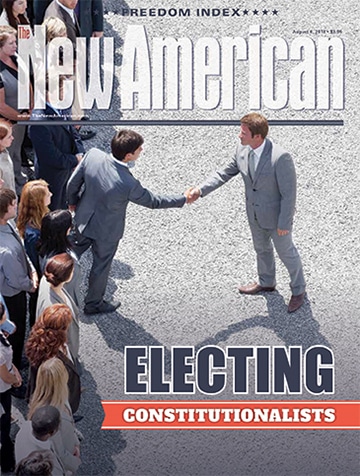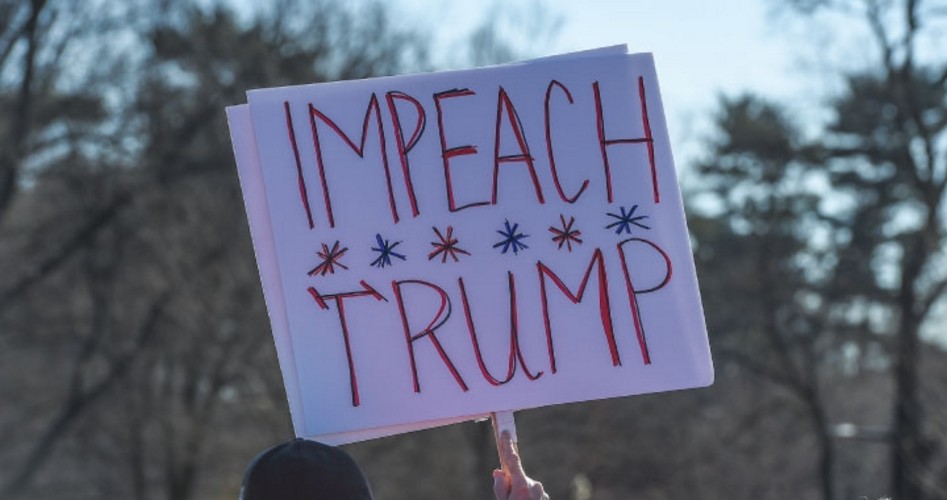History of Impeachment
The transformation of impeachment from a check against monarchical misdeeds to an instrument of republican government was first explored in state governments before 1787.... Between 1776 and 1787, state politicians drafted and tested various provisions for impeachment. Delegates to the federal convention — Madison, Randolph, Paterson, Mason, and Hamilton — supported by the voices and votes of other knowledgeable state leaders, fashioned national impeachment provisions along lines laid down in the states’ constitutions.
In every state constitution in force at the time of the calling of the Convention of 1787, the lower branch of the legislature possessed the authority to impeach officers of the state government, though the trial of the impeached magistrate was handled differently in the several states. In Virginia and Maryland, the state courts tried the impeached. In New York and South Carolina, the state senate and state judiciary joined together as a special court. In Pennsylvania, the General Assembly could impeach, and trials were conducted by the president of that body and the executive council. In the remaining eight states, the upper branch of the state legislature was the body responsible for trying the impeached state official. It is worth noting, though, that in Virginia and Delaware the executive was immune from impeachment during his term of office. It’s no wonder that these state constitutions were so influential on the federal constitution, as many of the delegates to the Constitutional Convention of 1787 took leading roles in the writing of their state constitutions. Impeachment in the U.S. Constitution The Virginia Plan — written by James Madison and presented by Virginia governor Edmund Randolph — included a provision granting to the national judiciary the power of “impeachment of all national officers.” It is important to note, however, that that provision did not specifically name the executive as one among those “national officers.” On June 2, the venerable John Dickinson of Pennsylvania proposed placing the power of removing the executive in the hands of Congress. His provision required that a majority of the legislatures of the states call for impeachment before the process could begin in Congress. As recorded by James Madison, here is how Dickinson explained his position on impeachment:It was necessary, he said, to place the power of removing somewhere. He did not like the plan of impeaching the great officers of state. He did not know how provision could be made for removal of them in a better mode than that which he had proposed.
Roger Sherman of Connecticut rose and spoke in support of Dickinson’s motion, adding that in his opinion, “The National Legislature should have power to remove the Executive at pleasure.” George Mason of Virginia — the universally admired co-author (along with the much younger Madison) of that state’s Declaration of Rights — also backed Dickinson’s proposal. “Some mode of displacing an unfit magistrate is rendered indispensable by the fallibility of those who choose, as well as by the corruptibility of the man chosen. [I oppose] decidedly the making the Executive the mere creature of the Legislature, as a violation of the fundamental principle of good government,” Mason declared. Mason’s fellow Virginian, James Madison, joined with James Wilson in speaking against Dickinson’s motion. In his Records of the Debates of the Federal Convention of 1787, Madison recorded the reasons for his and Wilson’s opposition. Madison wrote that he and Wilson observed in Dickinson’s proposed impeachment process:that it would leave an equality of agency in the small with the great States; that it would enable a minority of the people to prevent the removal of an officer who had rendered himself justly criminal in the eyes of a majority; that it would open a door for intrigues against him in States where his administration, though just, might be unpopular; and might tempt him to pay court to particular States whose leading partizans he might fear, or wish to engage as his partizans. They both thought it bad policy to introduce such a mixture of the State authorities, where their agency could be otherwise supplied.
Always wary of weakening the union, Madison saw the mixture of state and federal authority in the impeachment process placing too much power over the president in the hands of state legislators. Ultimately, both Dickinson’s proposal and Madison’s amendment to it were rejected by a majority of the delegates. Near the end of the day, delegates agreed that the executive “be removable on impeachment and conviction of malpractice or neglect of duty.” Noticeably absent from the agreed process was just which body was to be authorized to do the impeaching! There were, however, those delegates who thought the executive should not be impeachable while he was in office (as was the case in the state of Virginia). Speaking for those in favor of an unimpeachable executive, Gouverneur Morris said, “This is a dangerous part of the plan. It will hold him [the federal executive] in such dependence that he will be no check on the Legislature, will not be a firm guardian of the people and of the public interest.” Charles Pinckney echoed this opinion, asserting that impeachment of the executive by the legislature “would in that case hold them as a rod over the Executive and by that means effectually destroy his independence.” Rufus King agreed, too, explaining that he thought it necessary that the people could rely on the “vigor of the Executive as a great security for the public liberties,” adding that impeachment by the legislature would defy the “primitive axiom that the three great departments of government should be separate and independent; and that an Executive should not be impeachable unless he held office during good behavior [that is, for life, so long as he did not engage in bad behavior].” Here again, George Mason rose and reminded the convention of a more fundamental political precept: equality under the law. “Shall any man be over justice?” Mason asked. Benjamin Franklin, Elbridge Gerry, and James Wilson pounded their desks in agreement. The debate continued off and on for nearly three months. On September 4, delegates agreed to the following language: “He shall be removed from his office on impeachment by the House of Representatives, and conviction by the Senate, for treason or bribery.” Pinckney and others restated their opposition based on their perception that the legislature would hold the possibility of impeachment over the president, and he would be afraid to veto a bill lest the legislature begin impeachment proceedings. George Mason suggested adding the language “high crimes and misdemeanors against the state,” abandoning his earlier suggestion that the executive be impeachable for “maladministration.” With his typical foresight, James Madison objected to the “maladministration” standard, insisting that it would introduce imbalance into the three branches of the federal government by making the executive too dependent on the legislature, who would possess the power to get rid of any president who was obstructing the will of Congress. On September 12, the convention approved the version of the process we have. Finally, while the Federalist Papers and other essays written by advocates of the proposed Constitution promoted that document’s impeachment process, there were opponents — the so-called Anti-Federalists — who predicted that impeachment would be so rare as to serve as no real check on a president bent on usurping unconstitutional powers. Luther Martin, a delegate to the Convention of 1787 who wrote a series of essays opposing the Constitution called “The Genuine Information,” summed up the suspicions of those who foresaw futility in the co existing constitutional provisions that gave the president power to appoint many federal officers — many of whom would likely be former legislators — and gave legislators the power to impeach the president. Here’s the problem as Martin, and most of the Anti-Federalists, saw it:The president ... cannot be impeached but by the house of delegates, and that the members of this house are rendered dependant [sic] upon, and unduly under the influence of the president, by being appointable [sic] to offices of which he has the sole nomination, so that without his favour [sic] and approbation, they cannot obtain them, there is little reason to believe that a majority will ever concur in impeaching the president, lest his conduct be ever so reprehensible, especially too, as the final event of that impeachment will depend upon a different body, and the members of the house of delegates will be certain, should the decision be ultimately in favour [sic] of the president, to become thereby the objects of his displeasure, and to bar to themselves every avenue to the emoluments of government.
“High Crimes and Misdemeanors” When viewed in hindsight, it appears that Martin and the Anti-Federalists accurately predicted the rarity of impeachment, even of presidents who egregiously abuse their office. Donald Trump is the 45th president under the Constitution, and only eight of them have faced impeachment and only two (Andrew Johnson and Bill Clinton) were actually impeached. Furthermore, not a single president has been impeached, convicted, and removed from office. Not one in nearly 230 years of presidents of the United States. Perhaps part of the problem is that “high crimes and misdemeanors” are not defined by the Constitution. To supply the missing meaning, we’ll have to turn once again to the pages of history written at the time of the Founding. As with so many key terms contained in the Constitution, “high crimes and misdemeanors” was not defined because it didn’t need to be. If your employer told you that you’d be fired if you took a day off in the summer, you wouldn’t go looking in the employee handbook for a definition of “summer.” Here’s a brief rehearsal of the universal understanding of “high crimes and misdemeanors” provided by the Constitutional Rights Foundation:The convention adopted “high crimes and misdemeanors” with little discussion. Most of the framers knew the phrase well. Since 1386, the English parliament had used “high crimes and misdemeanors” as one of the grounds to impeach officials of the crown. Officials accused of “high crimes and misdemeanors” were accused of offenses as varied as misappropriating government funds, appointing unfit subordinates, not prosecuting cases, not spending money allocated by Parliament, promoting themselves ahead of more deserving candidates, threatening a grand jury, disobeying an order from Parliament, arresting a man to keep him from running for Parliament, losing a ship by neglecting to moor it, helping “suppress petitions to the King to call a Parliament,” granting warrants without cause, and bribery. Some of these charges were crimes; others were not. The one common denominator in all these accusations was that the official had somehow abused the power of his office and was unfit to serve.
For further enlightenment, we turn to the seminal scholarly analysis of the his- tory of impeachment, Raoul Berger’s Impeachment: The Constitutional Problems. Berger’s in-depth historical analysis of the impeachment reveals that “high crimes and misdemeanors” were political crimes against the state as a political entity, whereas “misdemeanors,” when used as a term by itself, was the traditional designation for criminal actions involving individuals. “In sum, ‘high crimes and misdemeanors’ appear to be words of art confined to impeachments, without roots in the ordinary criminal law and which, so far as I could discover, had no relation to whether an indictment would lie in the particular circumstance,” Professor Berger adds. Both accounts of the provenance of “high crimes and misdemeanors” as justifications for impeaching an executive — be he king or president — speak of “political crimes.” Accordingly, in order to complete the inquiry into the history of these terms, “political crimes” must also be defined. During the impeachment hearing for Richard Nixon, the House Committee on the Judiciary defined “political offenses” as “constitutional wrongs that subvert the structure of government or undermine the integrity of office and even the Constitution itself.” In light of even this cursory recitation of the history of “high crimes and misdemeanors,” it is a mystery why that standard is so rarely applied to those federal officials whose behavior has seemed to satisfy those requirements for removal from office. In order to determine the appropriate standard that should guide the process from beginning to end, here are the words of Alexander Hamilton: The subjects of ... [an impeachment court’s] jurisdiction are those offenses which proceed from the misconduct of public men, or, in other words, from the abuse or violation of some public trust. They are of a nature which may with peculiar propriety be denominated POLITICAL, as they relate chiefly to injuries done immediately to the society itself. [Emphasis in original.] As laid out in the history above, the critical question is not so much which acts qualify as high crimes or misdemeanors; the most important inquiry is whether the president is suspected of abusing the trust placed in him by the people and whether that abuse injures the people or the Constitution that binds them in a union. The answer to that question can only be determined by the people, acting through their elected representatives in the House of Representatives and the Senate, who must be candidates committed to protecting the public from tyranny, protecting the Constitution from tyrants, and impeaching anyone — from president to Supreme Court justice — who threatens the liberties of the people or the Constitution written to protect those liberties.Photo: AP Images
This article, revised by the author to bring it up to date, originally appeared in the August 6, 2018 issue of The New American. To subscribe to the print and/or digital versions of our twice-a-month magazine, click here.JBS Member or ShopJBS.org Customer?
Sign in with your ShopJBS.org account username and password or use that login to subscribe.

 Subscribe Now
Subscribe Now
- 24 Issues Per Year
- Digital Edition Access
- Exclusive Subscriber Content
- Audio provided for all articles
- Unlimited access to past issues
- Cancel anytime.
- Renews automatically

 Subscribe Now
Subscribe Now
- 24 Issues Per Year
- Print edition delivery (USA)
*Available Outside USA - Digital Edition Access
- Exclusive Subscriber Content
- Audio provided for all articles
- Unlimited access to past issues
- Cancel anytime.
- Renews automatically


